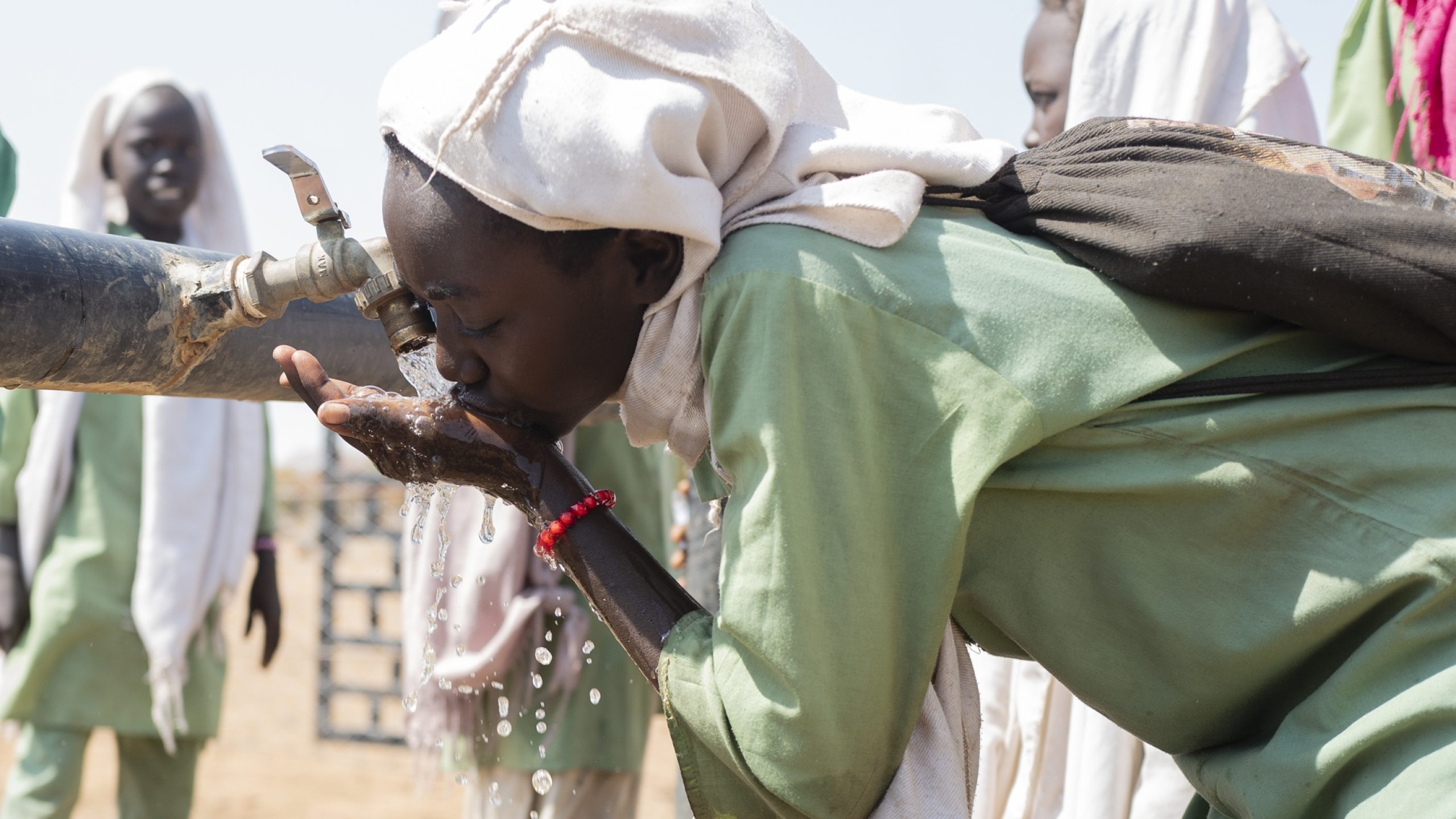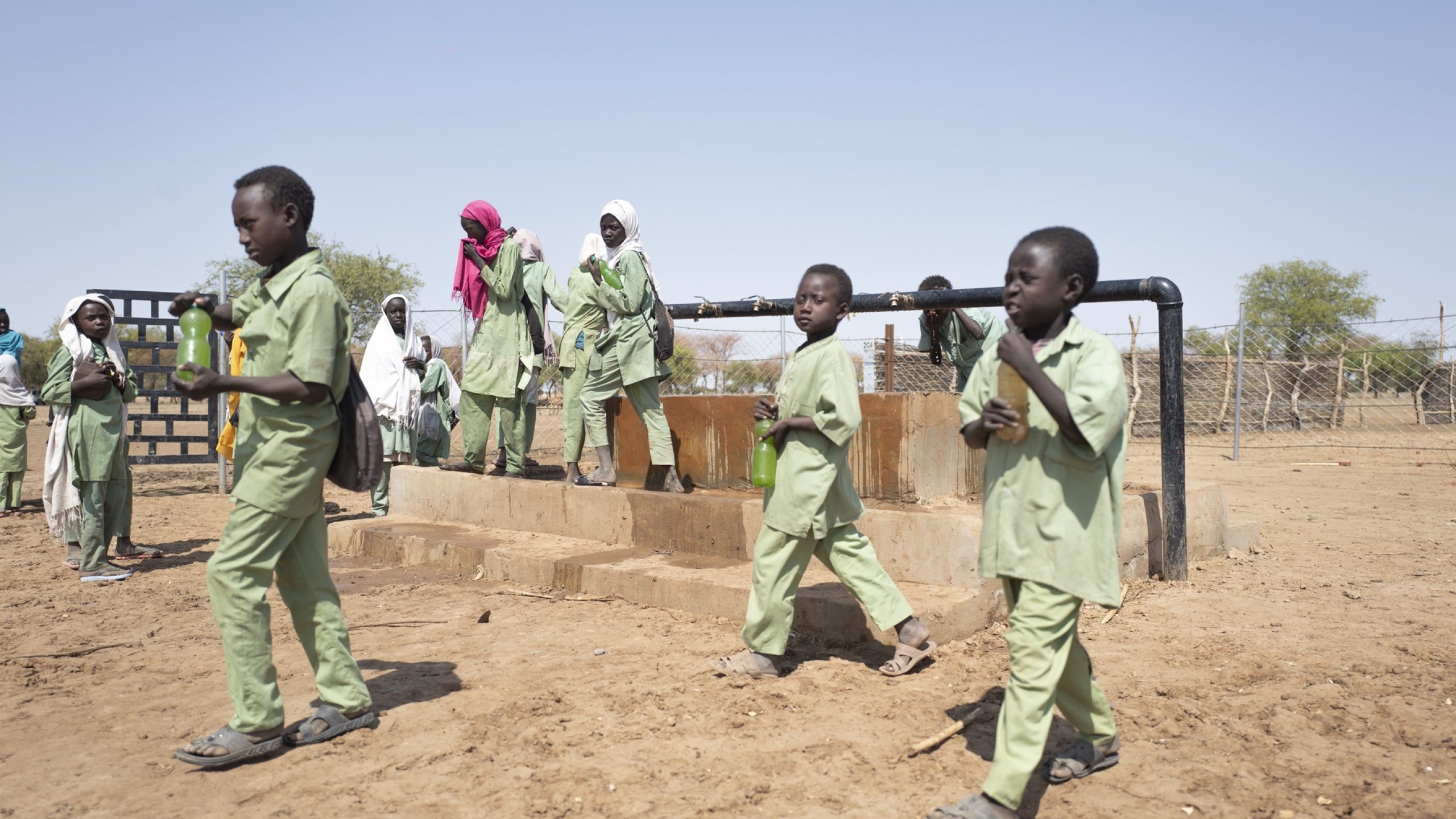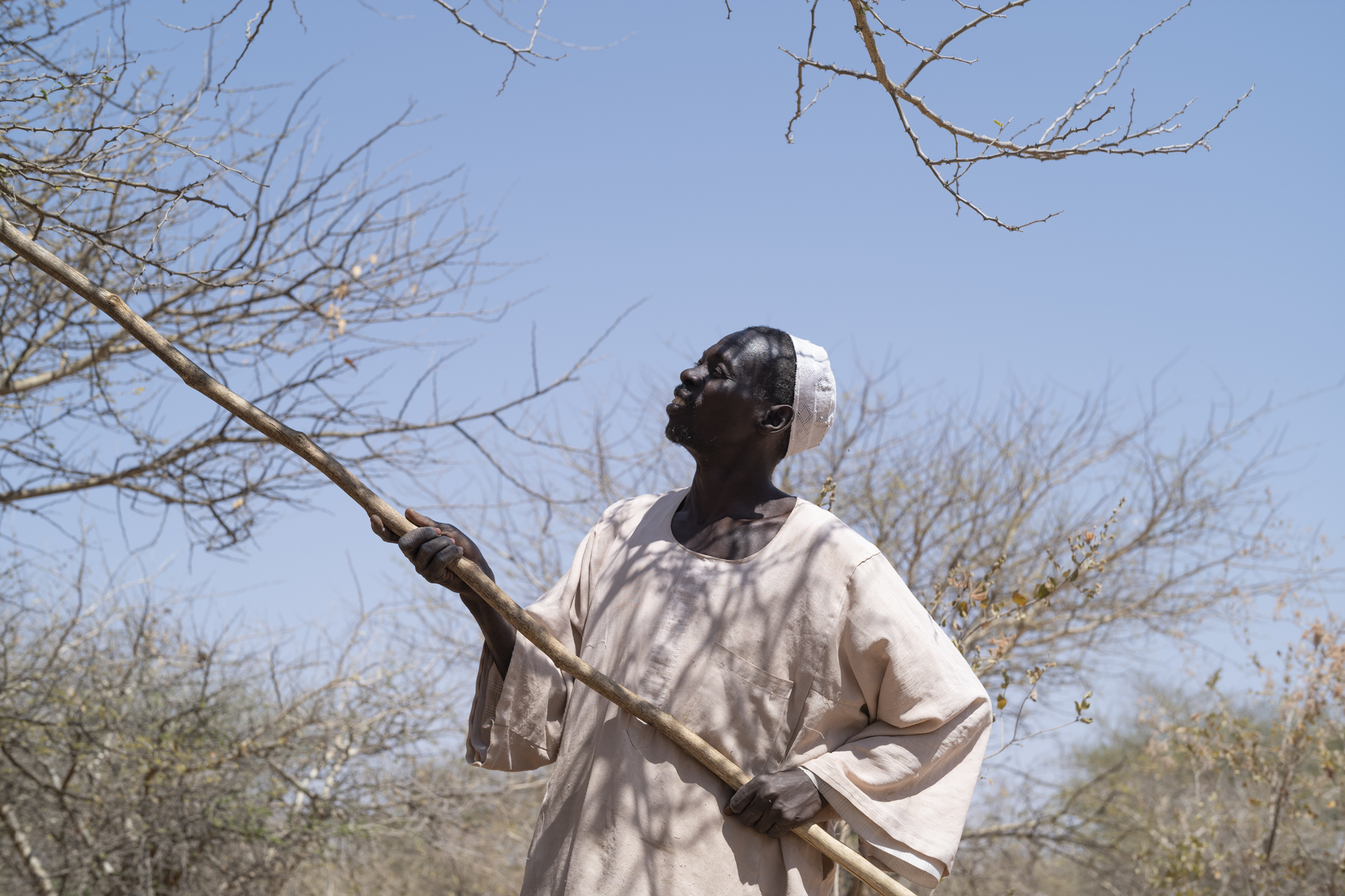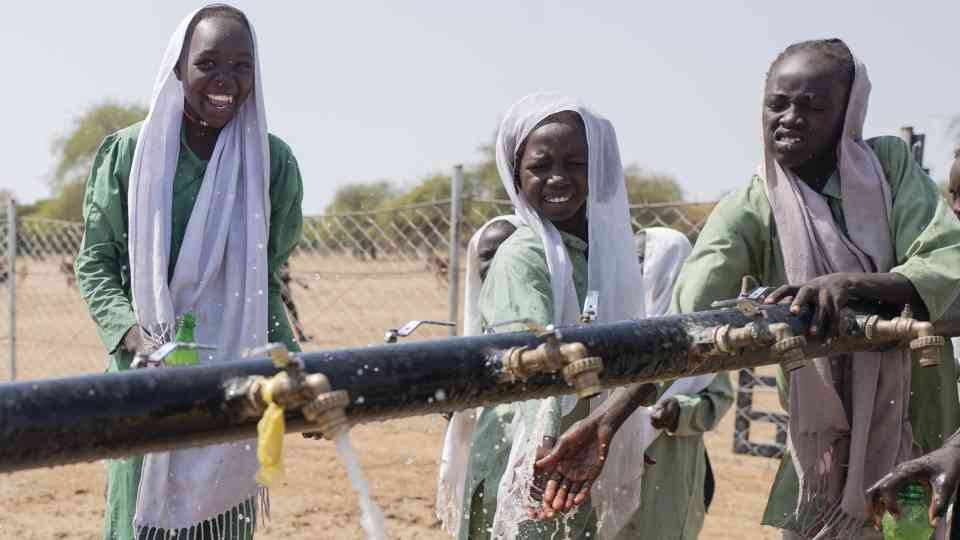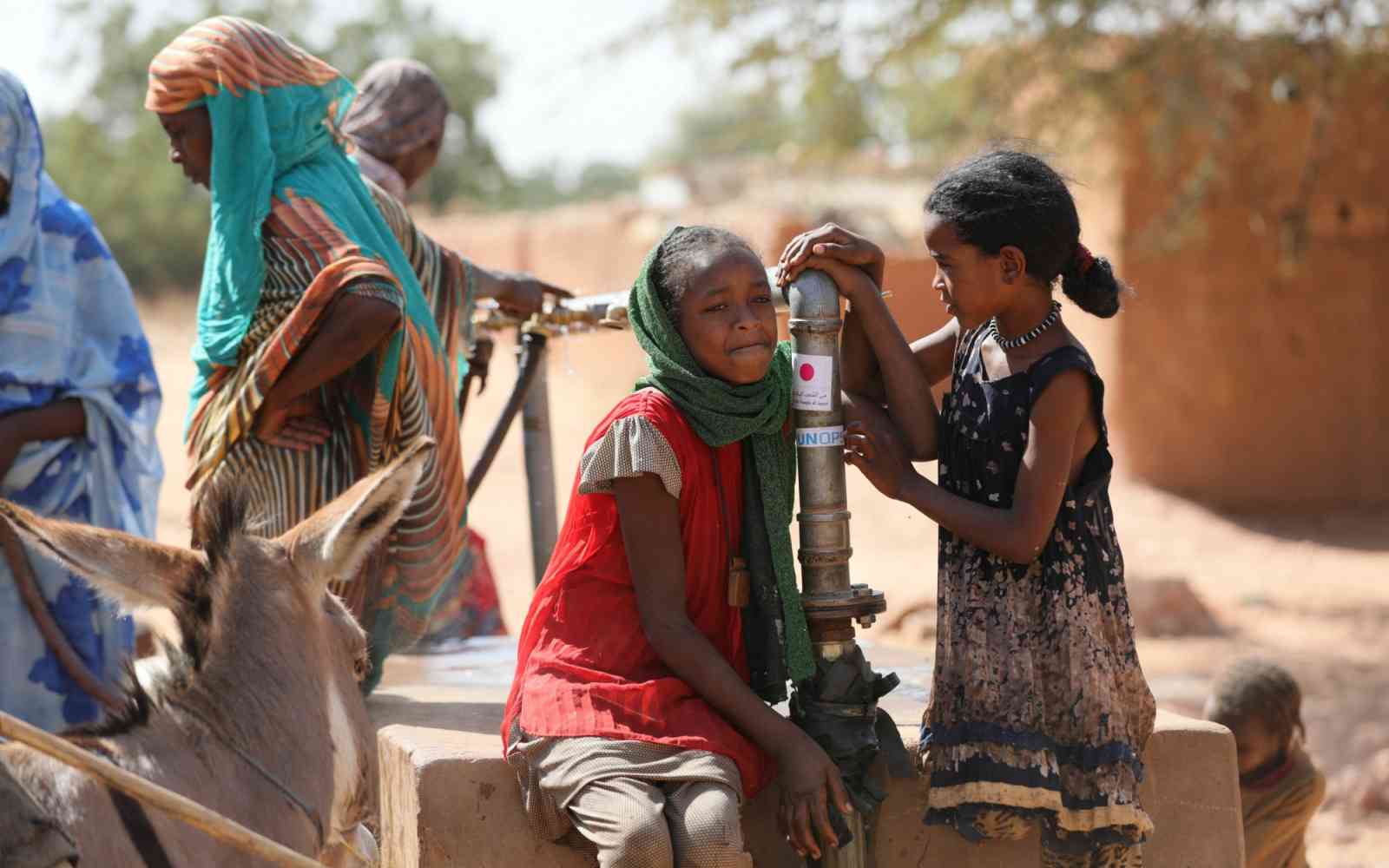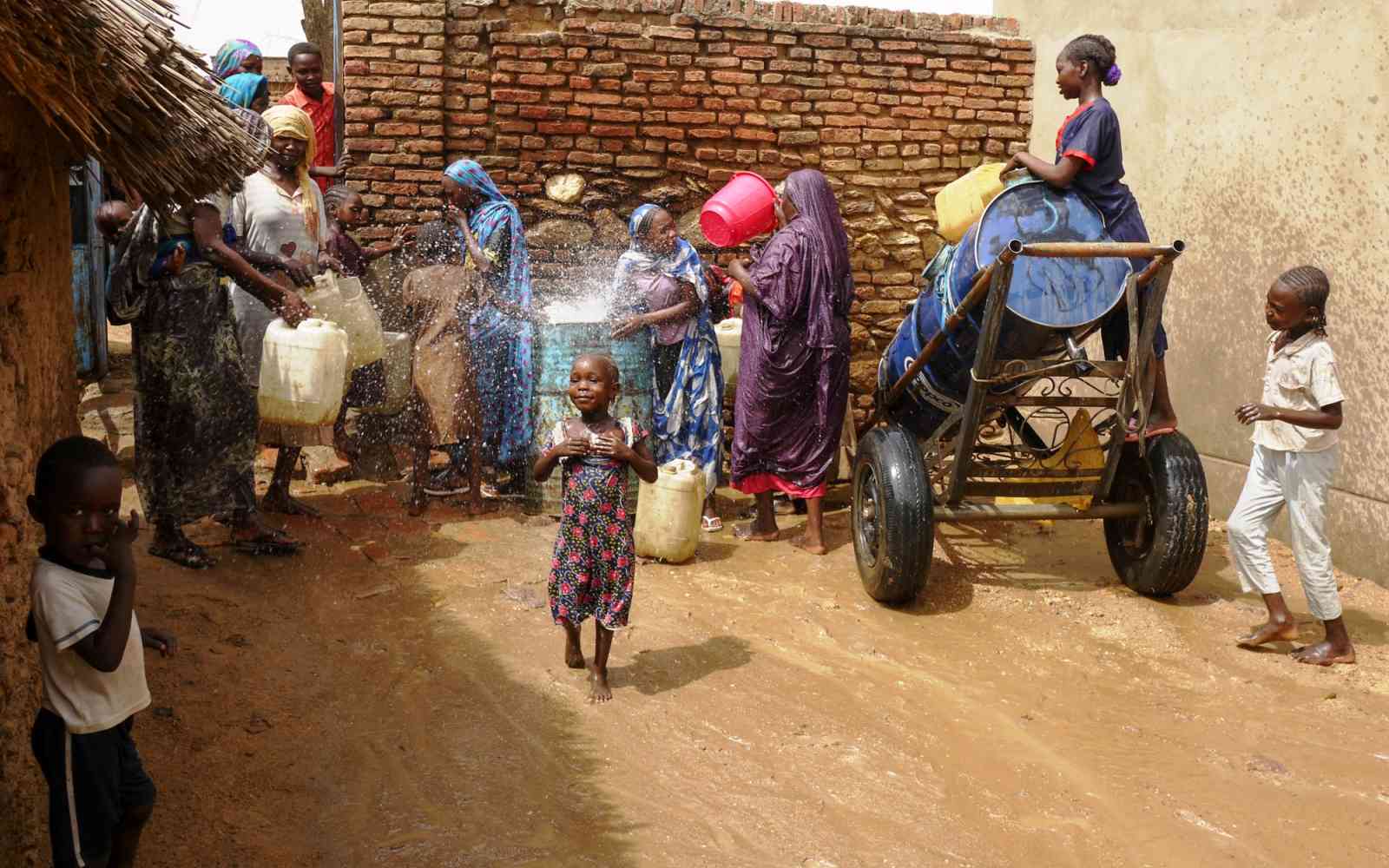The United Nations Office for Project Services (UNOPS)

Water: the artery of life
Better access to water is helping create new possibilities for people in some of the world’s most remote communities.
Water in East Darfur is not in short supply, but is mostly available from water reserves deep underground, making the precious resource difficult and costly to extract.
A multifaceted project focused on improving natural resource management and access to potable water in rural areas is helping to improve health, strengthen livelihoods and foster peace in an area prone to conflict.
“Water is the artery of life. Without water we can't carry on our lives. For us, having water has solved many problems,” says Elnor Alsair Elnor, the head of the local natural resource committee in Kadeik.
East Darfur
Kadeik is home to roughly 10,000 people and lies 15 kilometres from the state of East Darfur’s capital, Ed Daein. Communities living in the Kadeik area are largely dependent on agriculture, forestry and raising livestock. In the past, fetching water would require a three-hour donkey ride to Ed Daein in hot conditions and across difficult, sandy terrain.
The locality’s newly constructed water yard, however, means that people no longer have to travel vast distances to fetch water, freeing up their time so they can focus on farming and other income generating activities.
According to Elnor, until recently the idea of planting vegetables was not common. But with a close supply of water, the communities can now irrigate land to cultivate small gardens and produce crops such as arugula, radish, onion and tomatoes. This is enabling families to generate an additional income, while also helping to improve nutrition.



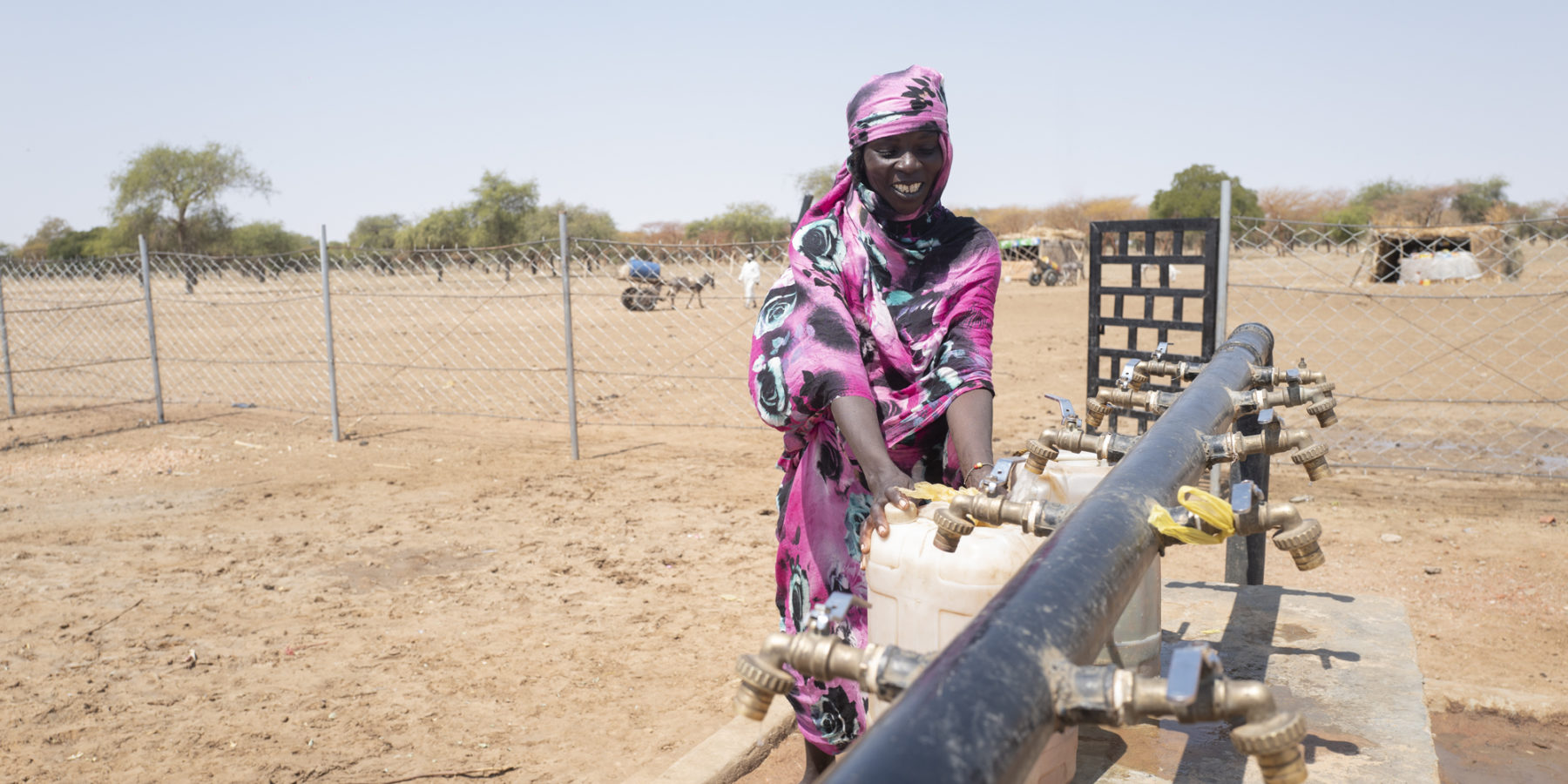
In Arafat, another locality of East Darfur, simple solutions like donkey carts are helping reduce the number of trips families need to make to replenish their containers at the water yard. The carts help ensure households have sufficient water to meet their daily needs, and reduce the time spent collecting water. This significantly impacts women, who typically carry out this task for their household. The carts are also useful during harvest season, when workers are often far from the water stations and need a regular supply of drinking water to keep hydrated.
"Before, there was no water around here. I used to go out at 6 a.m. to look for a water pump to get water. The weather was hot. The children and animals were thirsty. We couldn't go to the farms to work. We had to work every other day."
– Sadia Ahmen Abdullah, Arafat resident


"We used to get water using two carboys. We had to make the trip three times a day to get enough water. Now we have the carts, donkeys and tanks. You can go that day, fill up the tank and then share it with your neighbour. That is enough water for the day. You don’t need to go again until the next day."
– Fatima Mohammed Omer, Arafat resident
New opportunities
According to Cosimo Lamberti Fossati, a former project manager for the European Commission in Sudan - which funded the natural resource management project - ensuring new water infrastructure will have a positive impact in the long term requires communities to be engaged in the process.
“The idea is not simply to dig some wells and give water to people, but to also make this sustainable,” he explains.
Communities play an important role from the outset in the construction of the water yards – from providing land, to managing day-to-day operations. To make sure people can continue to access water for generations to come, a small affordable fee is charged to users, with 30 per cent of the income allocated to the East Darfur State Water Corporation, which is responsible for operating and maintaining the yards.
Establishing strong relationships between a range of stakeholders, as well as the communities themselves, has been a vital component in making the system work.
This project [...] has shown that when people sit around the table [...] and discuss how to use joint natural resources, they can find more commonalities than a reason to fight or not talk to each other
With the income generated by the water yards, communities are coming together to make plans to invest in future projects. For Munier Gaafar Mohammed, Country Manager for UNOPS in Sudan, the way people have taken ownership of the new water infrastructure system, and how it is managed, is a unique and positive reflection on its success.
“They are talking about how ‘we have done this’ and [how] ‘we are planning to do this in the future’. There is hope, there is aspiration, and there is the power of ownership of the facilities that have been put there,” he says.
About this project
By improving the way resources are managed, the Natural Resource Management Project aimed to improve livelihoods and alleviate poverty in conflict-affected communities of East Darfur. The project sought to mitigate the potential for violence and improve living conditions by addressing three key areas: access to water, environmental policy and livelihoods.
Funded by the European Union, the project was implemented in two phases in partnership with UN Environment (UNEP) and ZOA (an international relief and recovery organization), together with local partners, participating communities, customary institutions and the government.
UNOPS was the lead implementing agency for the project and was also responsible for constructing nine water yards. UNEP helped implement policies to guide the use of natural resources. ZOA, together with local partners, worked on capacity building to improve livelihoods and promote the use of more sustainable techniques for using natural resources.
The project has benefited more than 9,000 households in nine localities across the East Darfur State and has helped shape new legislation for natural resource management. The ‘Council Act for Coordination and Management of Natural Resource Policies for East Darfur State’ (2018), is the first of its kind in Sudan and provides a framework for the shared management of resources by both the state government and local communities.









